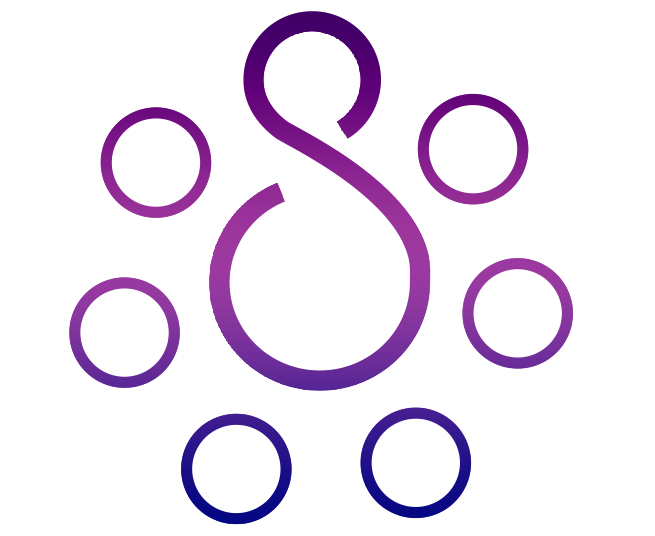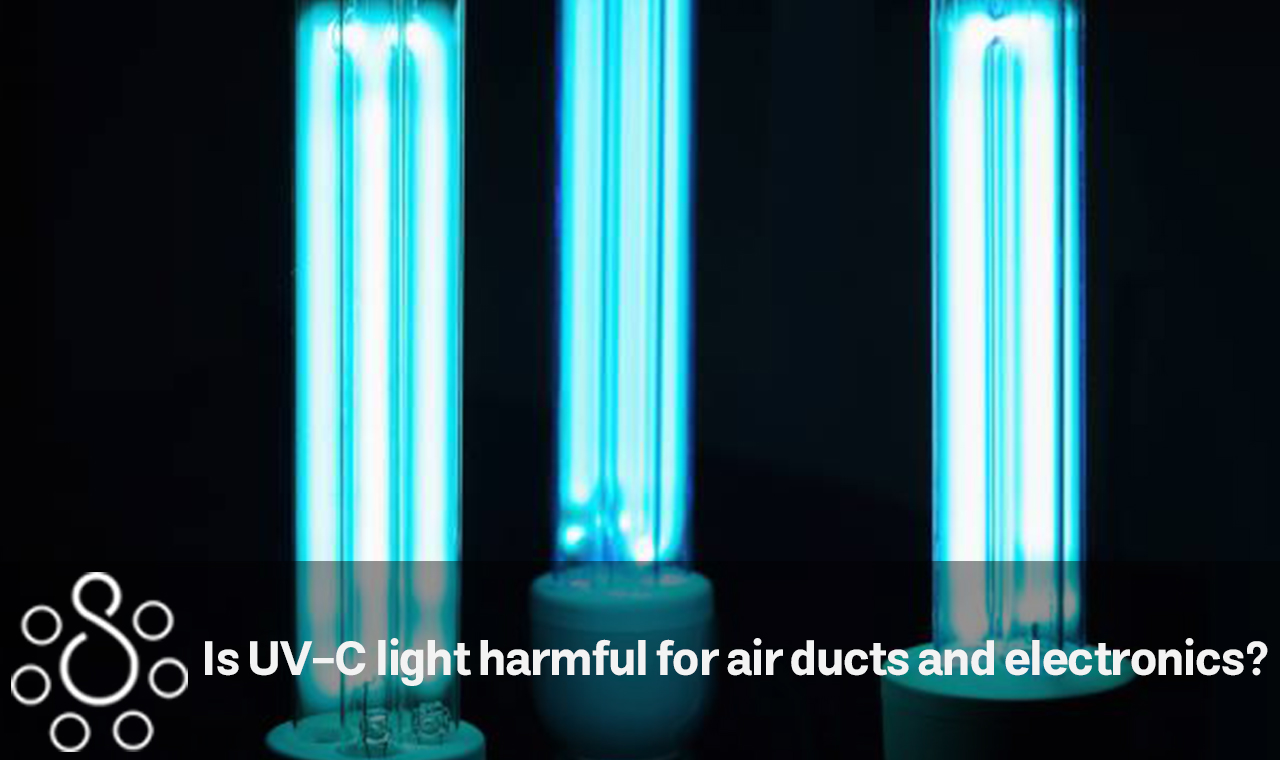If UV lights are installed in the ductwork of an HVAC system, they can be utilized to sanitize the air by eliminating germs and bacteria. These differ from one another in terms of dimensions, amps, voltage, and safety features.
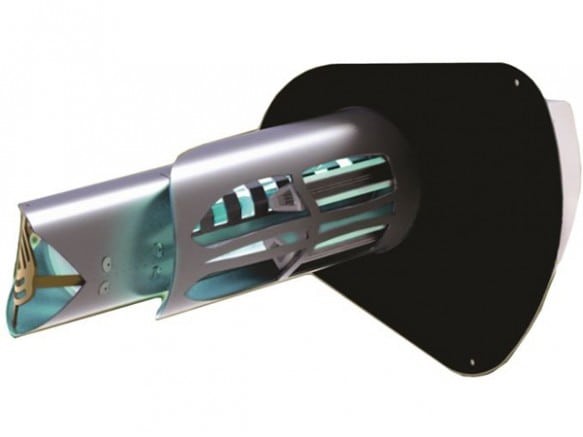
Do UV Lights Actually Have a Positive Impact on the Quality of the Air? RGF REME HALO In-duct Air Purifier with HEPA Filtration (UV Light). What exactly are UV lights when it comes to ductwork?
What exactly are UV lights when it comes to ductwork?
If UV lights are installed in the ductwork of an HVAC system, they can be utilized to sanitize the air by eliminating germs and bacteria. These differ from one another in terms of dimensions, amps, voltage, and safety features. They are very good at improving the quality of the air inside the home. I couldn’t be happier with my new UV lamp! I used to suffer from bad allergies, but these days I can finally breathe easily!
What effect do ultraviolet rays have?
Mold, fungi, bacteria, viruses, and other pathogens can be killed by UV lamps, which can make allergy symptoms go away. Within the HVAC system, ultraviolet (UV) lamps eliminate any hazardous bacteria that may be present in the ductwork before those bacteria can make their way into the air you breathe. Your home will be protected from the spread of microorganisms that might cause sickness thanks to these lights. They enhance the movement of air and the efficiency. In hospitals, these lights are often used to make sure that the highest standards of cleanliness are always met.
Read more: Surya Professional Disinfectant with UV-C Sterilizer Box Review
What is the mechanism behind UV lights?
UV lamps produce wavelengths that are lethal to bacteria and other infectious agents. These wavelengths inhibit the growth of illnesses and microbes in the HVAC ductwork, which would otherwise provide an ideal environment for their propagation. Ultraviolet germicidal irradiation is the term for the method by which light kills germs (UVGI). This technique makes use of UV radiation with a short wavelength in order to eradicate bacteria. It does this by focusing on their nucleic acids and having an effect on their DNA, which renders them unable to carry out their fundamental duties. UV radiation strong enough to generate unfriendly habitats for the organisms in question can do so in a circulating environment, such as those created by HVAC systems.
The air handler coil is kept sterile by means of a type of UV light known as coil sterilization, which operates continuously around the clock. UV lights have the ability to boost efficiency by removing biofilm that builds up in coils. When biofilms and bacteria build up, they can slow airflow and block the coils, which can lower the performance. Air sterilization is a sort of UV light unit that cleans and disinfects the air as it circulates through the system. This light is wired into the return duct so that it turns on automatically when the air handler does. The HVAC ductwork should undergo some kind of UV sterilization because this will help get rid of and stop the growth of any bacteria that may be present.
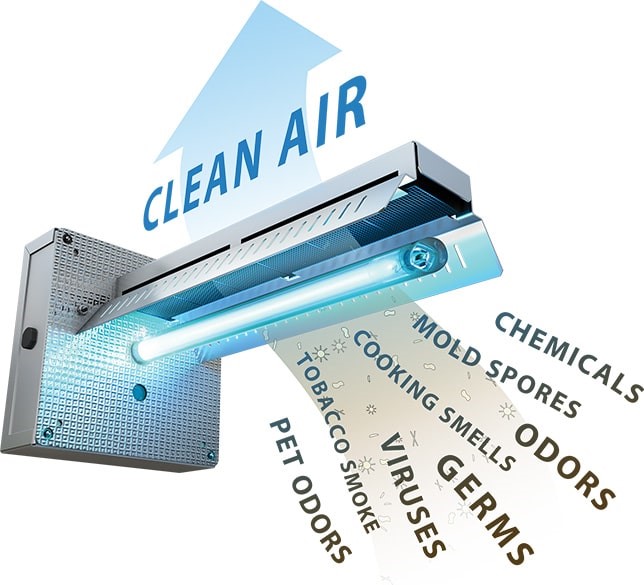
Is There a Danger to My Health from the Presence of Bacteria and Viruses in My HVAC System?
Indeed, this is the case, and it has been demonstrated by scientific research. There is a prevalent problem that should not be disregarded, and that problem is contamination in HVAC units. According to the National Institute of Health, contamination like this frequently has a role in the development of building-related disorders such as viral or bacterial infections, allergic rhinitis, asthma, and hypersensitivity pneumonitis.
However, only specific types of UV lights can be utilized in the process of air purification. Ultraviolet germicidal light, often known as UVGi, has the ability to destroy a wide variety of bacterial and viral strains. The germicidal efficacy of the UVGi light is achieved through its operation within the UV-C spectrum, which is the most effective wavelength spectrum.
UV Disinfection Machines Are Revolutionizing the Way in Which We Disinfect
The global interest in disinfecting cellphones reached an all-time high during the COVID-19 epidemic, which caused the interest to rise to an all-time high. Even the companies that make cellphones have felt the need to weigh in, with Apple being the most recent to issue updated advice on what to do and what not to do when disinfecting your device at the beginning of the pandemic.
Smartphone users were reminded more than anything else that they aren’t just carrying around a handy tool to get in touch with friends and family; rather, they have a potential germ minefield on them at all times, one that can aid in the spread of the coronavirus and other viruses if it isn’t properly disinfected. This was the most important takeaway from this event.
Because of all of the unpredictability and upheaval that is occurring right now in relation to the spread of viruses, we at ChargeTech have introduced our line of UV-C enabled Clean & Charge Carts and have collaborated with cleanse to release the Swift UV. By doing so, we have shifted our focus from simply keeping your electronic devices charged to also keeping them disinfected and charged.
We are aware that wherever you work, your company could benefit from having its electronic equipment sterilized, whether it is an iPad being used to write down patients’ information in a hospital or many computers that need to be cleaned before being given around to every student. The ChargeTech UVC Light Disinfection Technology can be used by many different industries to help keep electronic equipment clean and working, which stops the spread of bacteria and viruses that can make people sick.
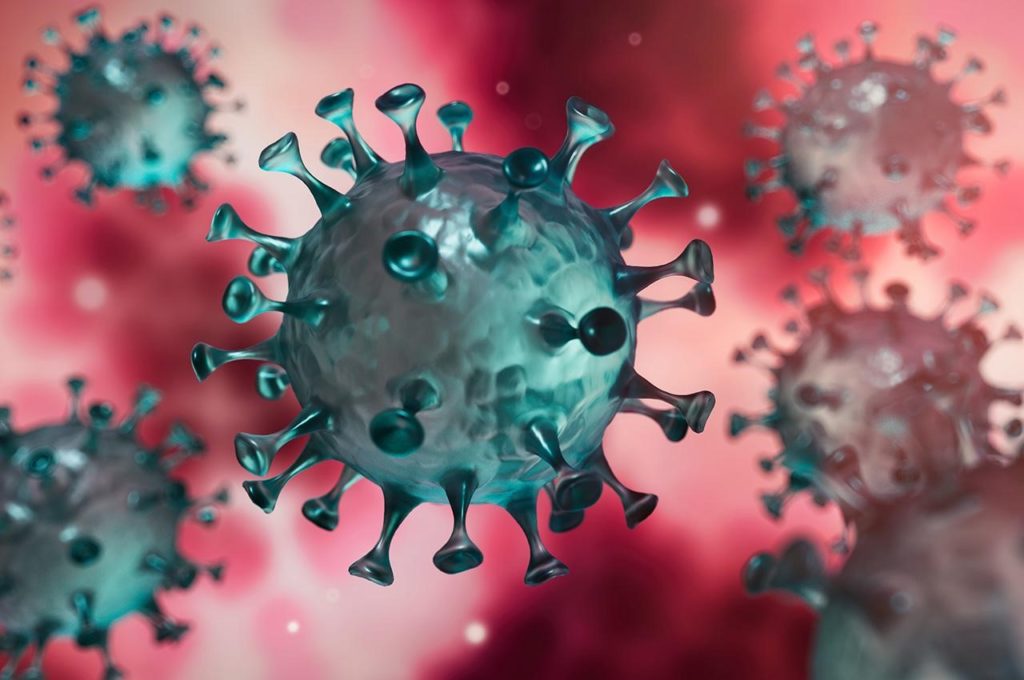
One of these industries is healthcare, as evidenced by the fact that many hospitals have started using UV-C Disinfection Machines in the wake of the coronavirus outbreak (or had already begun using them before the outbreak), in particular to disinfect electronics and mobile devices that are used inside the facility. Here is a piece of an article that was written about this and published in Medical Design Briefs:
“In today’s world, mobile technology can be found almost anywhere, but it’s especially prevalent in medical settings, where doctors, nurses, and office workers all utilize mobile devices to monitor and report on patient progress. However, these devices also present significant dangers. One investigation found that 94% of the mobile phones used by people in the medical field were dirty.
Hospitals are just one of the many public settings that have started using UV-C light disinfection machines to sterilize personal electronics and mobile devices. Other public settings that have begun using these machines include: However, you could be concerned about whether or not ChargeTech’s UV-C Light Disinfection technology is risk-free for the electronic components that are subjected to the cleaning process.
After all, the name “disinfection” conjures up images of harsh chemicals like bleach and other substances that, when they come into contact with human flesh, cause damage. Why would you want to disinfect something that is constantly close to your face, such as something in your hand, pocket, or near your face? Is it possible to use the UV-C cleaning technique without causing damage to your mobile device, laptop, or tablet computer?
This article investigates the efficacy and safety of ChargeTech UV light disinfection machines. It also demonstrates how these machines function and work to keep your gadgets clean and ready to be used. You may relax knowing that our UV-C products will not cause any harm to your mobile device while they are disinfecting it, and that the UV-C Light Disinfection Machines will not cause any harm to either your mobile device or to yourself. Not only are the UV-C Light Disinfection Machines sold by ChargeTech completely risk-free and highly efficient, but they also point the way to the future of contemporary disinfection technology.
Read more: Learning to use and set up Surya Professional disinfectant with UV-C sterilizer box
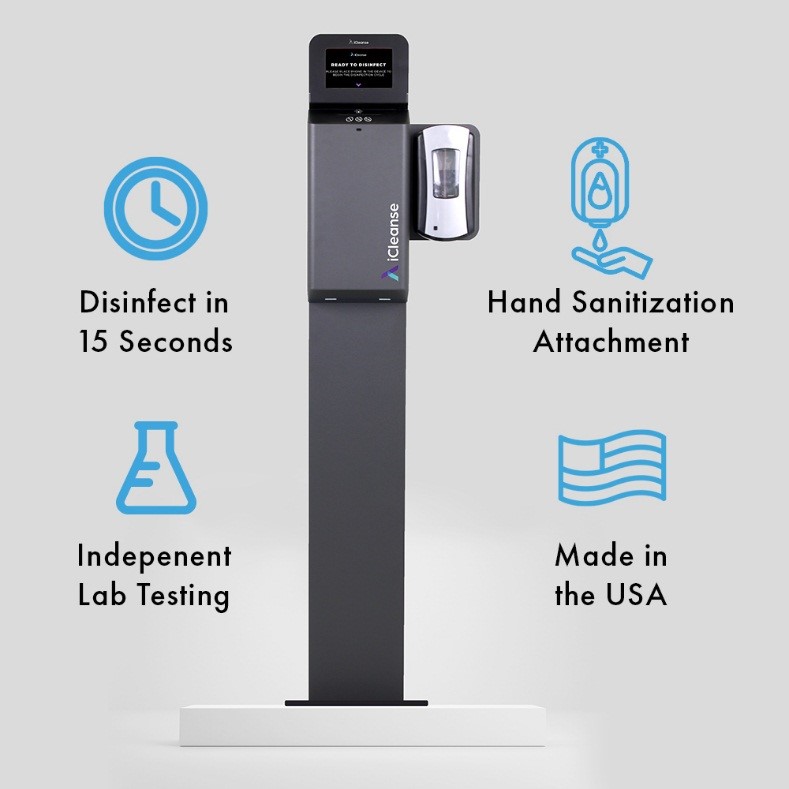
UV Light Is an Efficient and Risk-Free Method for Disinfecting Electronic Devices.
You may be wondering if there are any potential drawbacks or adverse effects associated with cleaning your mobile devices using UV-C light, just like there are with bleach, sanitizers, and other store-bought cleaning products. This is because standard disinfection methods are very similar. In a nutshell, UV-C light disinfection does not in any way weaken or wear down electronic components over time, even those found in mobile phones and laptops.
In contrast to harsh cleaning chemicals such as alcohol or bleach-based solutions, UV-C light disinfection does not in any way damage the effectiveness of the touch screen or the inside electronics of the mobile device in any way at all. The following is an excerpt from an article published by Medical Design & Outsourcing:
UV light is safe for use on touchscreens, cameras, and infrared sensors, and it works very well on nonporous, hard surfaces. UV-C light, in contrast to chemical wipes, does not cause things to become brittle or deteriorate.
The reason behind this is that ultraviolet light has an effect on the DNA and RNA of bacteria, which essentially kills the pathogen by preventing it from being able to reproduce itself, thus rendering it harmless. This process happens because although UV-C can be found in nature and is emitted by the sun, it is absorbed by the ozone layer and does not reach the Earth. This prevents it from having an effect on the environment. As a consequence of this, bacterial organisms do not have any defenses against the rays, which leaves these bacteria vulnerable to the disinfecting effects of the rays. According to the results of a paper about how well UV disinfection works that was published by Advanced Biotechnologies:
“UV sterilization, also known as UV disinfection or ultraviolet germicidal irradiation (UVGI), works by breaking down certain chemical bonds and scrambling the structure of DNA, RNA, and proteins, which prevents a microorganism from being able to reproduce. Other names for UV sterilization include UV disinfection and ultraviolet germicidal irradiation (UVGI). When a microbe loses the ability to reproduce on its own, it is thought to be dead because it can no longer reproduce in a host and is no longer contagious.
Because the light is able to reach every part of the object and affect every organism on its surface, UV-C is ideal for use in the disinfection of flat, hard-surfaced objects such as cell phones and laptops. This is one of the reasons why the previous quote from Medical Design & Outsourcing noted that this method is especially effective on objects that have flat or hard surfaces.
Because light has more difficulty traveling over more difficult to reach areas and cleaning the insides of softer or more porous objects with more crevices and irregularities, disinfecting oddly shaped or structured objects as well as objects that are soft or more porous takes longer and is more difficult to do. But because they are flat, hard, and have sharp corners, electronic devices like laptops and cellphones are perfect for this process. It sterilizes them in minutes and they are ready to use right away.
Related Article: What Is a Toothbrush Sanitizer?
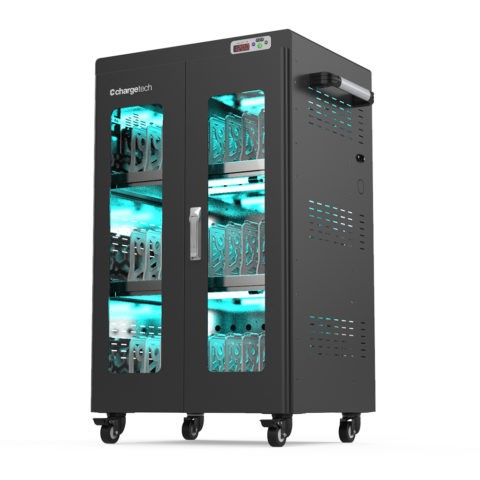
Traditional methods of manual disinfection, such as using chemically based cleaning agents and wipes, are in stark contrast to the UV-C disinfection procedure, which eliminates the need for these kinds of steps entirely. To kill any germs that may be present on an item, disinfecting wipes contain chemical pesticides that kill the bacteria as they come into contact with it.
The hardware of a cell phone can be damaged by many of these pesticides over time, which makes them less effective solutions than UV-C Disinfection, which does not produce these side-effects. UV-C disinfection is also safer. The UV-C Disinfecting Machines sterilize through direct contact with light, which does not leave behind any residue or film on the object being disinfected and also does not create any waste. This is different from the traditional way of disinfecting, which is to wipe something like a cell phone with a substance that contains pesticides. This creates chemical waste.
On the other hand, traditional techniques of disinfection generate a significant amount of chemical waste. This is due to the fact that each disinfectant wipe can only be used once before it needs to be thrown away. According to the Cleveland Clinic, mixing various different kinds of cleaning fluids or chemically based disinfection treatments can lead to the development of toxic vapors, which can lead to a variety of negative effects, including the following: Wheezing Coughing Difficulty in taking a breath irritation to the eyes, nose, throat, and lungs. nausea. Pneumonia
In conclusion, continuous disinfection of mobile phones and electronic devices using disinfecting wipes or sprays necessitates the ongoing purchase and stocking of additional disposable cleaning products, some of which have been shown to cause damage to the screen of a mobile device over an extended period of time. Bleach and other harsh chemicals corrode the oleo phobic screens used on smartphones over time, causing the touch screens to become less responsive and the hardware to deteriorate.
This is because oleo phobic screens are created with this technology in order to prevent finger prints. It is preferable for your cellphone to limit the amount of manual disinfection with wipes and other chemicals that is done on it. This makes less trash and makes your device last longer. It also reduces the amount of chemical waste that ends up in the environment.
Related Article: Are UV sanitizers effective? What You Should Know Before Making One
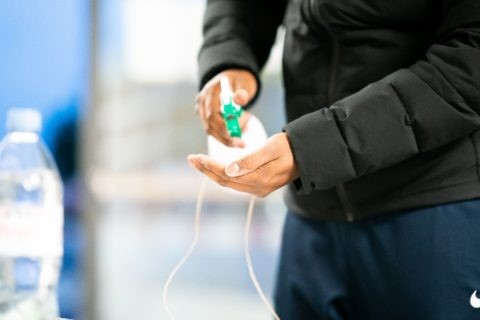
UV Light Disinfection Machines are the safest, most effective choice for limiting the spread of bacteria on your mobile phone, shielding it from bleach and alcohol-based cleaning solutions while fully cleaning and removing bacteria and pathogens. Is human UV-C safe?
UV-C light is good for disinfecting electronics, but is it safe for humans? ChargeTech Clean Charge products are safe when used in a closed and regulated environment, such as a Clean & Charge AC Cart 2.0 or Swift UV.
UV-C disinfection happens securely and efficiently within our charging cabinets’ stainless steel interiors, without the light’s rays ever touching the user. Our cart operators can’t be exposed to UV-C light. To operate a ChargeTech UV Light Disinfection Machine, simply press a button to start the disinfection process for 5, 10, or 15 minutes, depending on the number of devices being disinfected. No one using our charge carts will be exposed to UV-C light; only the electronic equipment inside will be disinfected.
